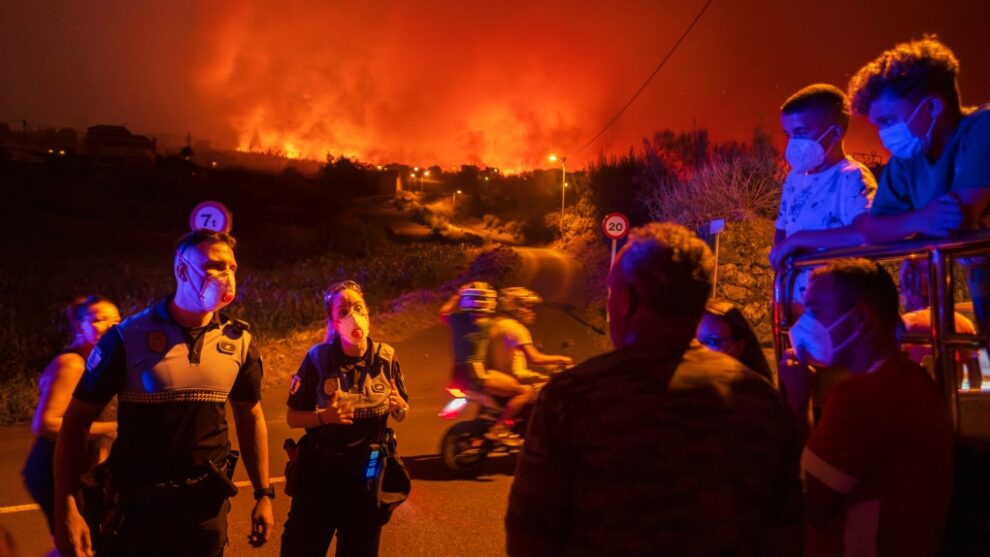Over 12,000 people have been forced to flee their homes in Tenerife after wildfires tore through the Spanish Canary Island.
Police data showed the the number of evacuations surged from the 4,500 reported on Friday. Some 11 towns have been affected by the fires but tourist areas have been spared.
While worsening weather conditions that would “complicate firefighting operations” had initially been expected overnight Sunday, the night had been “quiet, with more favorable weather conditions than expected,” local government said.
Improved conditions had seen a return of a “certain normality” in firefighting operations, Tenerife firefighters said on X , formerly known as Twitter.
The fire currently covers an area of roughly 8,400 hectares (around 20757 acres), according to local authorities.
Tenerife firefighters called the emergency operations their “largest deployment in history.” They are being assisted by mainland emergency services and the Spanish military.
“It is probably the most complicated fire that we have had on the Canary Islands in the last 40 years,” the region’s leader Fernando Clavijo told journalists at a press conference on Thursday.
Tenerife was especially hot last weekend and into the first part of this week with temperatures ranging in the mid-30 degrees Celsius, which above average for this time of year.
Wildfires have raged in numerous parts of the world this year, including Northern Africa, Hawaii, Canada and Europe.
Extreme heat is also growing again in Europe.
In France, the national meteorological agency warned the coming week would be the hottest period of summer this year, with 49 regions being issued with an orange level heatwave warning.
On Sunday, Météo France said that it was rare for a heatwave of “such intensity” to occur so late in the summer.
Temperatures in Europe began to increase in the Iberian Peninsula this weekend, spreading into central Europe for much of next week, according to CNN’s Weather team.
Source : CNN






































